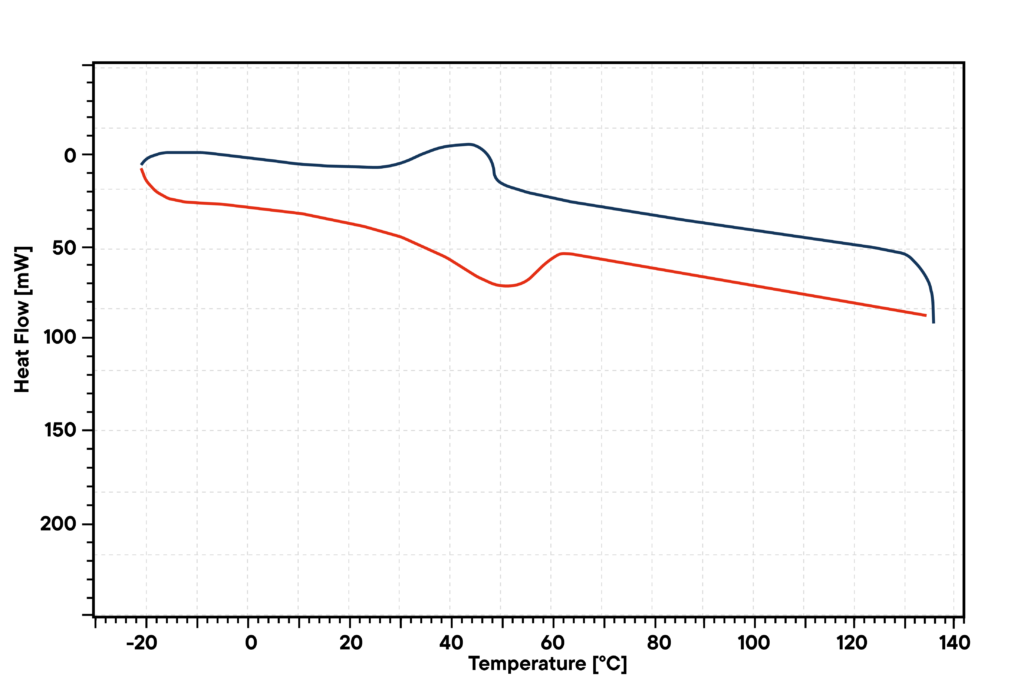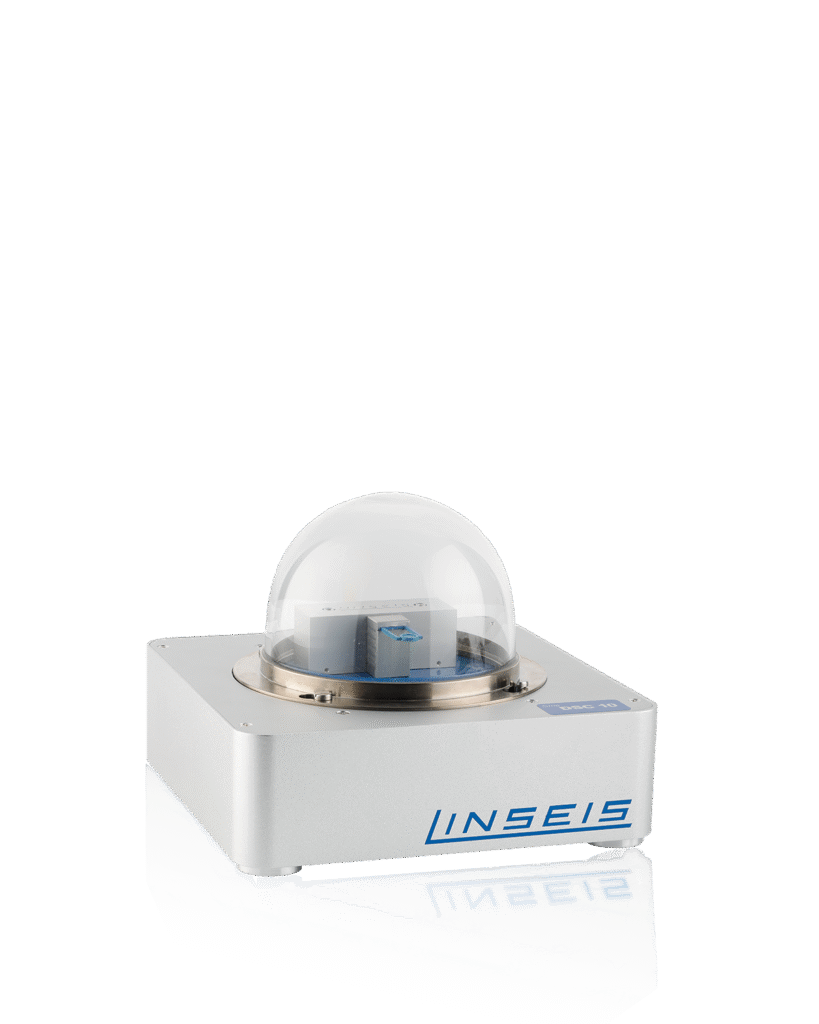Raw oil consists of a broad mixture of heavy and light alkanes, alkenes and aromatics. Therefore, it usually needs to be refined which means that the compounds are separated and purified as they all have different uses like as an engine fuel, raw material for polymers and chemistry or many more.
To check the quality and composition of the raw material, some fast tests for quality control are more than useful and the DSC can be used this way, providing the desired information.
Besides the decomposition, there is one characteristic effect in the DSC diagram of crude oil that can be of interest and used as quality control value: The individual wax appearance temperature (WAT).

The graphic shows the heating (red) and cooling (blue) curve of a crude oil sample between -20°C and 140°C. During heating, the solid parts are getting liquid, leading to a decrease in viscosity of the oil.
These melting processes can be seen as broad peak, as many different compounds melt simultaneously over a certain temperature range. During cooling, the crystallization can be observed as exothermic effect. As oils contain a certain amount of heavy organic compounds that are not liquid but more or less solid at room temperature, there is always a “wax-part” in the oil.
During heating, these agglomerates melt in a broad peak that is hard to evaluate. However, during cooling, the onset of the crystallization of these waxes is a defined, sharp onset that can be seen at a definite temperature which can characterize the individual crude oil composition. This effect can be used for quality control.
